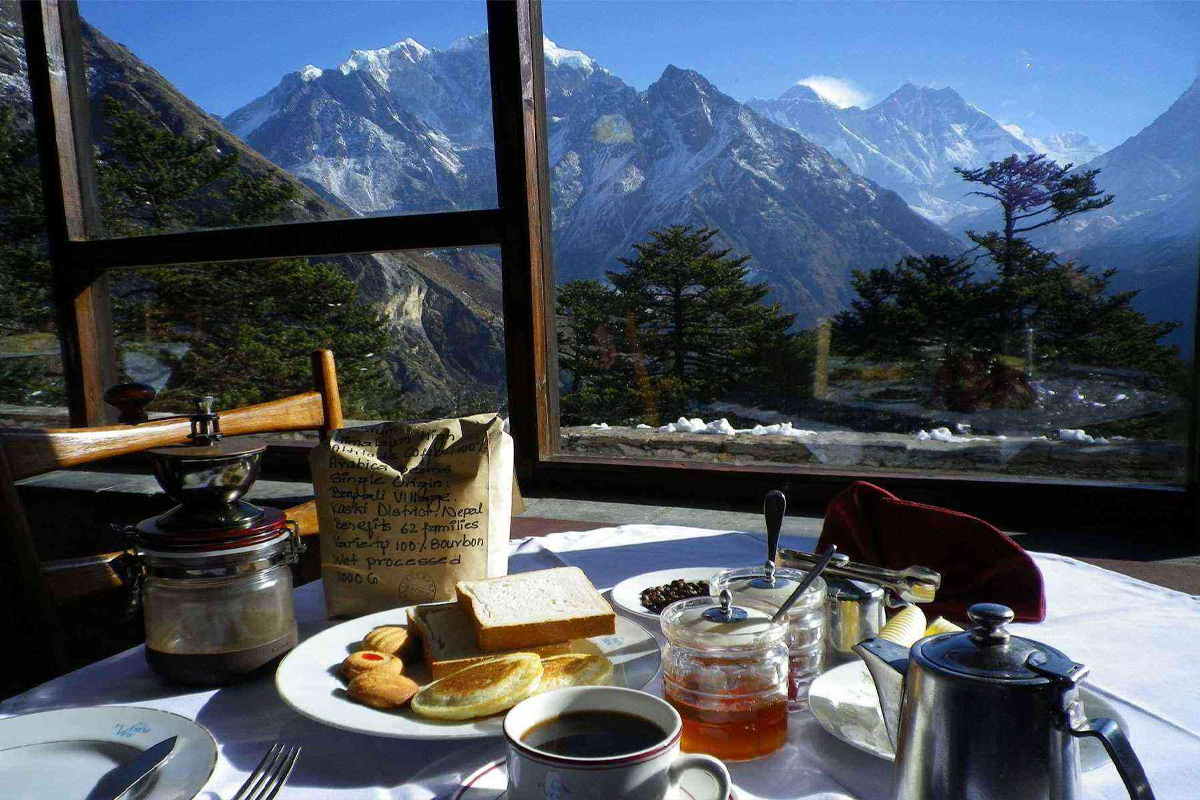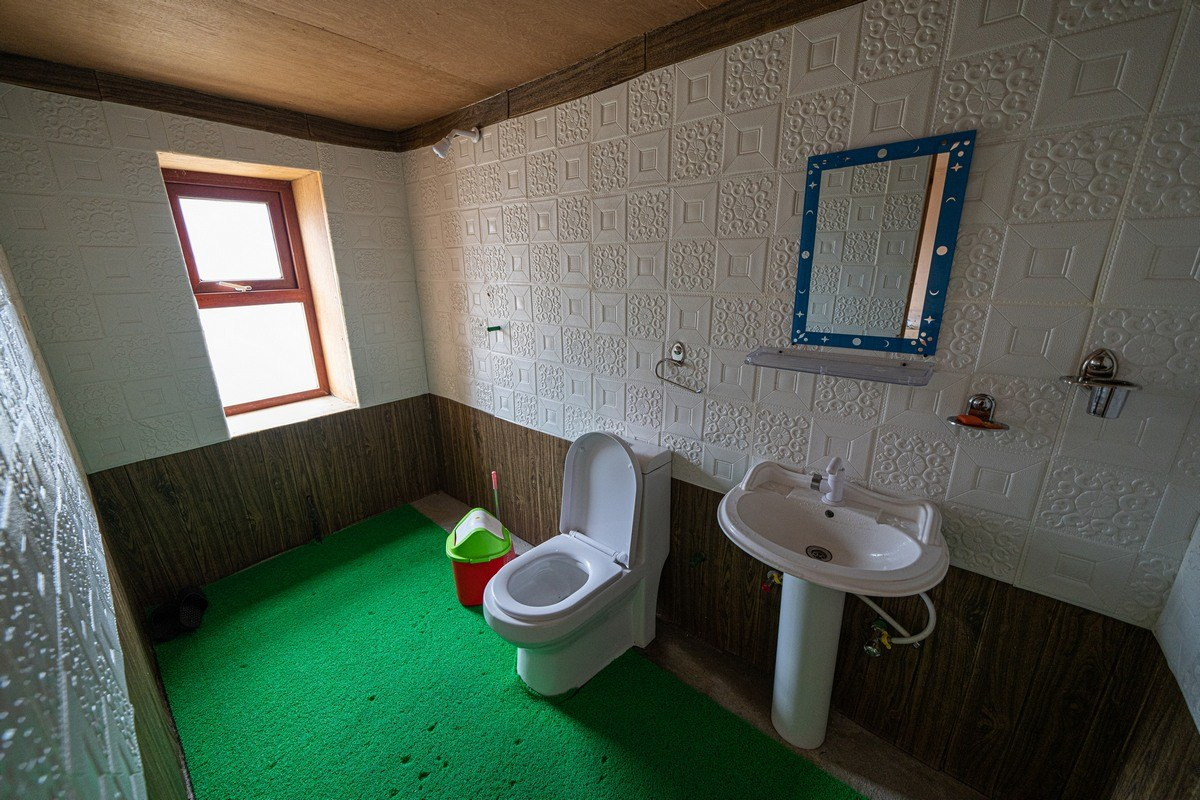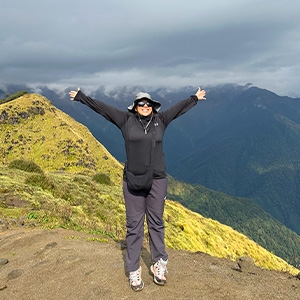Accommodation facilities during the Everest Base Camp Trek
Rooms and Beds
Accommodation facilities in tea houses vary from basic to moderately comfortable, with options ranging from twin sharing to private rooms. The rooms typically feature simple beds with clean bedding, providing trekkers with a cozy space to rest after a long day of trekking. While the amenities may be minimal, tea houses prioritize cleanliness and hospitality, ensuring a comfortable stay amidst the rugged wilderness.
Additionally, some tea houses may offer extra amenities such as hot showers or electric blankets for added comfort, although these luxuries may come at an additional cost. Overall, tea houses provide a welcoming refuge for trekkers seeking respite from the challenges of the trail, with their warm hospitality and serene ambiance making them an indispensable part of the Everest Base Camp trekking experience.

Food and Dining Environments
Meals served in tea houses are hearty and nourishing, providing trekkers with the sustenance needed to fuel their journey. The menus often feature a variety of options, including traditional Nepalese dishes such as dal bhat (rice and lentils) as well as international fare like pasta and soups. Trekkers can expect freshly prepared meals made with locally sourced ingredients, offering a taste of authentic Nepalese cuisine in the heart of the Himalayas.

The dining areas of tea houses serve as communal gathering spaces where trekkers come together to share stories, exchange tips, and forge friendships. The warm and inviting atmosphere fosters a sense of camaraderie among travelers from all corners of the globe, creating lasting memories and connections amidst the breathtaking landscape of the Everest region.

Toilets and Shower Facilities
Toilets in teahouses are typically basic and may vary in quality depending on the altitude and popularity of the trek. Lower-altitude teahouses may have flush toilets, while higher-altitude teahouses may have manual flushing toilets or long drops. It's important to note that toilet paper is not always provided, so it's recommended to bring your supply.
Shower facilities are also available in most teahouses, although they may be basic and require an additional fee. Hot water may not always be available, particularly at higher altitudes where fuel is scarce. It's important to be mindful of water usage, as water is a precious resource in the mountains.
While the toilet and shower facilities in teahouses may be basic, they provide a necessary and convenient option for trekkers on the Everest Base Camp trek. It's important to be prepared for the conditions and bring any necessary supplies, such as toilet paper and a towel according to your needs.

Electricity and Charging Points
Despite the remote location, many tea houses are equipped with electricity and charging points, allowing trekkers to power their electronic devices and stay connected with loved ones back home. While internet access may be limited or unavailable in some areas, trekkers can still enjoy the opportunity to disconnect from the outside world and immerse themselves in the natural beauty of the Himalayas.

Internet Facilities
Internet facilities are available throughout the Everest Base Camp trek via mobile networks and Wi-Fi hotspots in tea houses. But, free Wi-Fi options are very limited, whereas paid Wi-Fi services usually cost between USD 3–10 per hour. Tea houses at higher altitudes, such as Gorak Shep, might not have consistent Wi-Fi connections.
So, trekkers should expect intermittent connectivity and may need to be patient when accessing the internet for communication or browsing purposes. Additionally, it's advisable to have offline alternatives for essential communications and navigation while trekking in such remote regions.
However, for those seeking continuous internet access, including email and social media updates, purchasing a SIM card and data bundle in Kathmandu is recommended.
Tea Houses Along EBC Trail
1. Lukla
- Yeti Mountain Home (20+ attached bathrooms)
- Old Town Guest House (20 + rooms)
2. Phakding
- See You Lodge (9+ attached bathrooms)
- Trekker’s Lodge (8+ attached bathrooms)
- Yeti Mountain Home (20+ luxury rooms)
3. Namche Bazaar
- Yeti Mountain Home (20+ luxury attached bathrooms)
- AD Friendship Lodge (9+ attached bathrooms)
- Alpine Home (5+ attached bathrooms)
4. Debuche / Pangboche
- Rivendell Lodge (20+ attached bathrooms)
- Buddha Lodge (Common rooms with shared bathroom)
- Sher Khumbu Lodge (9+ attached bathrooms)
- Hotel View Point (8+ attached bathrooms)
5. Dingboche
- Good Luck Hotel (12+ attached bathrooms)
- Dingboche Resort (15+ attached bathrooms)
6. Lobuche
- New EBC Lodge (7+ attached bathrooms)
- National Park Lodge (All common rooms with shared bathrooms)
7. Gorakshep
- Gorakshep Yeti Resort (All common rooms with shared bathrooms)
- Everest Inn (All common rooms with shared bathrooms)
- Snowland Highest Inn (All common rooms with shared bathrooms)
.jpg)
FAQs
What are teahouses in Nepal?
Tea houses in Nepal are fundamental establishments that cater to trekkers and travelers exploring picturesque landscapes, especially in popular trekking regions like the Everest Base Camp Trail.
These tea houses serve as basic lodges or guesthouses, providing essential amenities such as accommodation, meals, and sometimes additional services like hot showers and Wi-Fi connectivity. Typically run by local families, tea houses offer travelers a glimpse into Nepalese culture and hospitality, making them an integral part of the trekking experience in Nepal.
How many tea houses are on Everest Base Camp Trek?
The exact number of tea houses along the Everest Base Camp trek can vary depending on several factors, including the specific route taken and seasonal variations in tourism.
However, there are numerous tea houses scattered along the trail, ensuring that trekkers have safe and comfortable accommodation options at various points of their journey. These tea houses are strategically located in villages and settlements along the route, providing trekkers with a place to rest, refuel, and connect with fellow adventurers amidst the stunning Himalayan landscape.
.jpg)
How to find the best teahouses on EBC Trek?
Finding the Best Accommodation in Everest Base Camp Trek involves thorough research, careful planning, and consideration of various factors. Trekkers can start by reading reviews from other travelers, consulting with experienced guides or tour operators, and researching online resources dedicated to trekking in the Everest region. It's essential to consider factors such as cleanliness, hospitality, amenities offered, and proximity to the trail when selecting tea houses for accommodation along the trek.
However, If you choose to book a trek to Everest Base Camp with Footprint Adventure, we can arrange accommodations at the finest teahouses for your journey.
How much does food cost on Everest Base Camp Trek?
The cost of food on the Everest Base Camp trek can vary depending on factors such as the tea house's location, menu offerings, and the specific dish ordered. Generally, meals at tea houses are reasonably priced, with typical costs ranging from $5 to $15 per meal. Trekkers can expect a variety of options, including traditional Nepalese dishes, international cuisine, and beverages like tea and coffee, all prepared with locally sourced ingredients.
Do I need to book a teahouse in advance for EBC Trek?
Yes, during peak trekking seasons, especially in the spring and autumn months, booking tea house accommodation in advance along the Everest Base Camp trek is highly advisable. This helps ensure availability, especially in popular trekking areas and during busy periods when accommodations can fill up quickly.
However, during off-peak seasons or for those trekking independently, it may be possible to find accommodation on arrival without prior booking, although availability may be limited.
Nonetheless, If you choose to book a trek to Everest Base Camp with Footprint Adventure, we can arrange accommodations at the finest teahouses for your journey.
Do tea houses provide blankets and sleeping bags?
Many tea houses along the Everest Base Camp trek provide blankets for trekkers to use during their stay. However, trekkers should bring their sleeping bags, especially during colder months when temperatures can drop significantly at higher altitudes. Having a sleeping bag ensures added warmth and comfort, particularly during chilly nights in the mountains. If you choose to book with Footprint Adventure, we could arrange a sleeping bag for you.

Are teahouses safe and comfortable for solo travellers?
Tea houses along the Everest Base Camp trek are generally safe and comfortable for solo travellers. However, as with any travel experience, it's essential for solo trekkers to take caution, especially when traveling alone in remote areas. Also, according to the recent law of NTB, it is mandatory to hire a guide or a porter for high-altitude trekking to mitigate potential risks. Hiring a guide or porter offers security and comfort.
It's also advisable to inform someone about your itinerary and keep in touch with family or friends during your trek to ensure your safety and well-being.
Do Everest Base Camp Tea Houses accommodate dietary restrictions?
Most tea houses along the Everest Base Camp trek are willing to accommodate dietary restrictions to the best of their ability. Despite that, trekkers should communicate any dietary preferences or restrictions in advance to ensure a comfortable dining experience.
While tea houses may not always have an extensive menu, they are usually willing to accommodate requests for vegetarian, vegan, gluten-free, or other dietary preferences whenever possible.

What is the check-in and check-out time at Teahouses in Everest?
The check-in and check-out times at tea houses along the Everest Base Camp trek can vary depending on the individual establishment and its policies. But, as a general guideline, check-in is typically in the afternoon, allowing trekkers time to rest and settle in after a day of trekking. Whereas, the Check-out is usually in the morning, allowing trekkers to depart early and continue their journey along the trail.
However, flexibility may be possible depending on availability and the tea house's specific policies, so it's always a good idea to confirm check-in and check-out times with the teahouse's staff upon arrival.
How much does it cost to stay in a teahouse on Everest Base Camp Trek?
The cost of staying in a tea house along the Everest Base Camp trek varies depending on factors such as the location, season, and the amenities provided. On average, trekkers can expect to pay around $5 to $20 per night for accommodation in a tea house.
This cost typically includes a basic room with bedding, access to shared toilet and shower facilities, and sometimes additional facilities such as meals or Wi-Fi connectivity.
Yet, prices may vary depending on the tea house's facilities and services, so it's essential to inquire about the rates and what is included when booking accommodation.

Conclusion
In conclusion, teahouses on the Everest Base Camp trek offer a range of accommodation options, from basic to moderately comfortable, ranging from twin sharing to private rooms. The food served is hearty and nourishing, and the dining areas serve as communal gathering spaces where trekkers come together to share stories and forge friendships. Toilet and shower facilities may be basic, but they provide a necessary and convenient option for trekkers. Overall, teahouses provide a cozy and hospitable environment amidst the rugged wilderness of the Himalayas.







.jpg)
.jpg)



